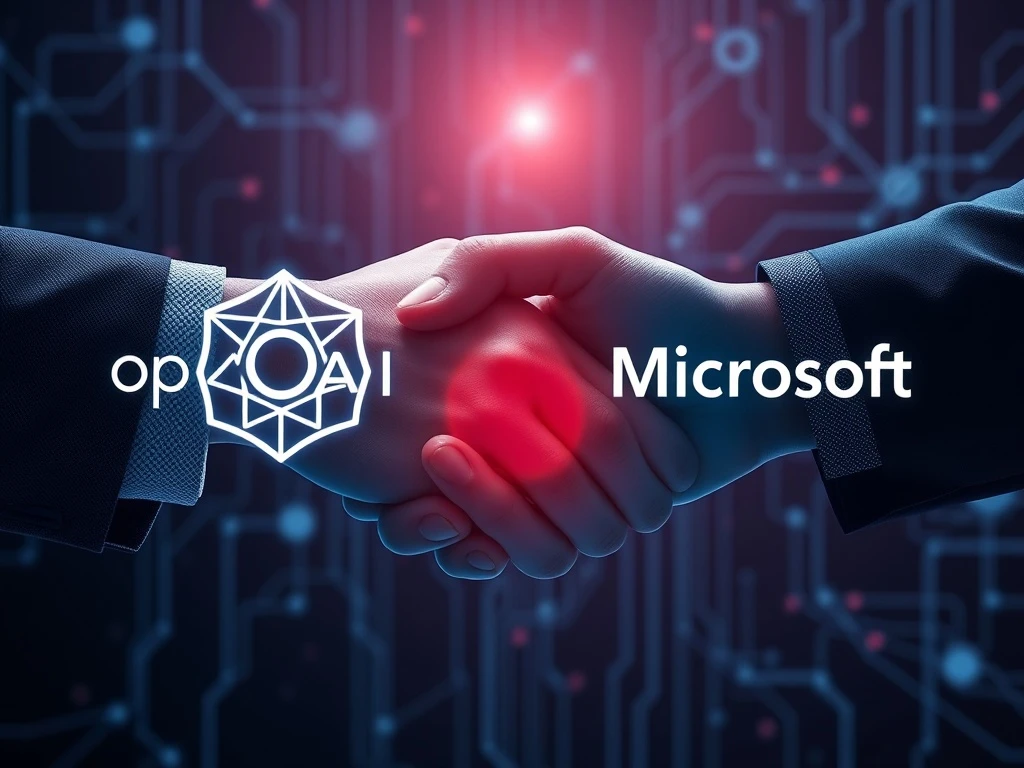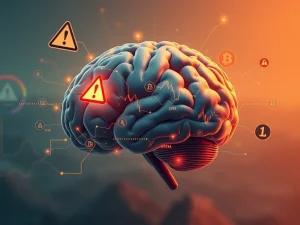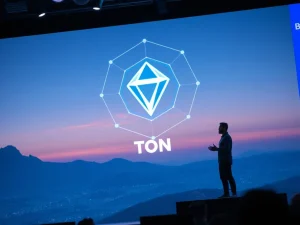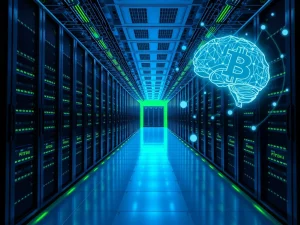OpenAI Microsoft Deal: A Strategic Restructuring Valued at $135 Billion

The landscape of artificial intelligence is undergoing a seismic shift. Recently, a significant development emerged from OpenAI, the innovator behind ChatGPT. This strategic move holds immense implications, particularly for those interested in the burgeoning world of AI-powered cryptocurrency trading. The **OpenAI Microsoft deal** represents a pivotal moment, reshaping the future of AI development and its commercial applications.
OpenAI’s Strategic Shift to a Public Benefit Corporation
OpenAI, a leading AI research and deployment company, has officially restructured its organization. The company is now a public benefit corporation. This change aims to provide greater flexibility for raising capital. Consequently, OpenAI can scale its ambitious artificial intelligence initiatives more effectively. This structural conversion allows OpenAI to balance its profit-making activities with its stated public benefit mission. Many industry observers are closely watching this model.
A **public benefit corporation** (PBC) operates as a for-profit entity. Therefore, it retains the ability to attract investors and generate returns. However, it also commits to creating a general public benefit. This dual objective marks a notable evolution for OpenAI. The company initially started with strong nonprofit roots. Critics, including Elon Musk, have voiced concerns. They argue that this shift deviates from its original mission. Nevertheless, the restructuring provides a robust framework for growth and innovation.
The core of this restructuring involves a monumental partnership. Microsoft, a global technology giant, has secured a 27% stake in the newly formed entity. This stake is valued at approximately $135 billion. Furthermore, this agreement grants Microsoft long-term access to OpenAI’s foundational AI models. This access is crucial for Microsoft’s own AI strategy. It ensures their competitive edge in the rapidly evolving AI sector.
Beyond the equity stake, the **OpenAI Microsoft deal** includes a substantial financial commitment. OpenAI has pledged to spend $250 billion on Microsoft’s Azure cloud services. This commitment spans the lifetime of their partnership. This solidifies the deep strategic and financial ties between the two companies. It also underscores Microsoft’s pivotal role in supporting OpenAI’s infrastructure and scaling needs.
The Growing Influence of AI Trading Bots
The reach of AI technology extends far beyond conversational models. It is now deeply integrated into various financial applications. Specifically, **AI trading bots** are gaining significant traction. These sophisticated programs leverage artificial intelligence to execute trades automatically. They operate in both traditional stock markets and the volatile cryptocurrency landscape. This integration highlights the practical applications of advanced AI.
ChatGPT, OpenAI’s flagship **large language model**, remains incredibly popular. Industry data indicates an estimated 800 million weekly active users. This widespread adoption showcases its robust capabilities. Its influence is not limited to simple conversations. Instead, its underlying technology empowers many advanced applications. These applications include complex financial analysis and automated trading strategies.
AI-powered trading bots utilize ChatGPT and similar **large language models** to process vast amounts of market data. They analyze news sentiment, identify emerging trends, and learn from historical trading patterns. Moreover, these bots can refine their strategies in real time. This adaptive capability is a game-changer for traders. It allows for quicker responses to market shifts. The result is often more optimized trading decisions. This automation reduces human error and emotional biases.
The integration of **ChatGPT crypto** applications is particularly noteworthy. Cryptocurrency markets operate 24/7. They are also highly volatile. This environment makes them ideal for AI-driven automation. AI trading bots can monitor multiple assets simultaneously. They can execute trades based on predefined algorithms. This capability offers a distinct advantage. It helps traders capitalize on fleeting opportunities. They can also mitigate risks more effectively.
Competitive Edge: LLMs in Crypto Trading Performance
The effectiveness of different **large language models** in real-world trading scenarios is a subject of ongoing research. Recently, a study compared several prominent LLMs. Researchers trained these models specifically for crypto trading. The objective was to assess their performance. This experiment provided valuable insights into their practical capabilities.
The study yielded interesting results. Grok, developed by X, demonstrated superior performance. DeepSeek, a leading Chinese AI model, also outperformed its rivals. Both Grok and DeepSeek showed better returns in simulated crypto trading. They surpassed both ChatGPT and Google’s Gemini in this specific task. This indicates that while ChatGPT is widely used, specialized models may offer an edge in niche applications like trading.
The experiment design was meticulous. Each bot began trading with an initial capital of $200. This allowed for a controlled comparison. Subsequently, the capital scaled up to $10,000 per model. All transactions were executed on Hyperliquid, a prominent decentralized exchange (DEX). This real-world simulation environment adds credibility to the findings. It provides a clearer picture of how these models perform under actual market conditions.
These findings hold significant implications for the **AI trading bots** sector. Developers and traders are constantly seeking the most efficient tools. The performance disparities highlight the importance of model selection. Furthermore, they emphasize the need for continuous research. Optimizing LLMs for specific financial tasks is crucial. This competitive analysis drives innovation. It also helps refine trading strategies. Consequently, the entire **ChatGPT crypto** ecosystem benefits from these advancements.
The Future of AI and Crypto Integration
The **OpenAI Microsoft deal** marks a new chapter in AI development. This strategic alliance will likely accelerate innovation. It will also foster greater integration of AI into various industries. The cryptocurrency market stands to gain significantly from these advancements. As AI models become more sophisticated, their utility in trading, analysis, and risk management will only grow.
The shift to a **public benefit corporation** for OpenAI, while controversial for some, provides a robust framework for capital acquisition. This financial stability is essential for sustained research and development. It enables OpenAI to continue pushing the boundaries of what AI can achieve. The commitment to Azure services further intertwines the fates of these two tech giants. This collaboration promises powerful new tools for developers and users alike.
Moreover, the competition among **large language models** is heating up. The crypto trading performance of Grok and DeepSeek against ChatGPT and Gemini illustrates this point. This healthy competition benefits the end-user. It drives continuous improvement in AI capabilities. Traders can expect increasingly powerful and accurate **AI trading bots** in the future. These tools will offer enhanced market insights and automated strategies.
However, challenges remain. The reliance on centralized cloud services, as seen with the AWS outage affecting Coinbase, highlights infrastructure vulnerabilities. As AI becomes more embedded in critical financial systems, robustness and decentralization will become paramount. Nevertheless, the trajectory is clear: AI, spearheaded by companies like OpenAI and supported by tech giants like Microsoft, will continue to revolutionize the financial world, including the dynamic realm of cryptocurrency.










